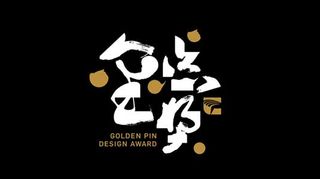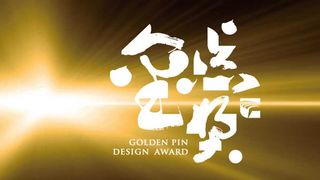
The Golden Pin Design Award (GPDA) is the longest-running design award for products expressly created for the Chinese-speaking ('huaren') market. A new logo design for the award was recently created by pioneering Taiwanese hybrid creative studio JL Design in partnership with celebrated Taiwanese calligrapher Tong Yang-Tze (董陽孜).
Here we chat to Johnason Lo, founder and creative director of JL Design, to learn how they went about it...
How did you approach this design?
The Golden Pin Design Award is a measure of the lifestyle of contemporary Chinese people. In an effort to emphasize the important role the Golden Pin Design Award plays in the huaren world, we invited celebrated calligrapher Tong Yang-Tze to work with us to create a key visual.
Using calligraphy, a traditional Chinese communication and artistic tool, together we created a visual that strikes a balance between ancient Chinese aesthetics and Western design techniques.
By deconstructing and then reconstructing design traditions and techniques from both the East and the West, we were able to create a new huaren design language.
Why use Chinese calligraphy?
We wanted to use graphic lines that represent Chinese culture. We wanted to emphasize the Chinese name of the award. And we decided to use Chinese calligraphy in the graphic because it is such a distinct part of Chinese culture.
Why Tong Yang-Tze?
Our decision to approach Ms Tong was almost instinctive. Tong Yang-Tze's work combines the Chinese art of writing with western visual arts composition. Her works are not merely calligraphy, but they are also pieces of art created very much with design in mind.
Get the Creative Bloq Newsletter
Daily design news, reviews, how-tos and more, as picked by the editors.

We wanted to connect the key visual to Taiwan, and so Ms. Tong was a natural choice. Ms. Tong's style is unique and has a strong presence. She tried to find different ways of drawing the dots in the graphic, and in the end she drew these dots in a truly distinctive way.
This is because she wanted to express that the starting point (or starting 'dot' if the word is literally translated from Chinese) of the Golden Pin Design Award is different because it is for Chinese-speaking people and reflects Chinese cultural values.
What challenges did you run into?
Our idea was to marry Chinese calligraphy with graphic design, making the key graphic a blend of the East and the West. Having to re-shape the characters that Ms. Tong created for us was a challenge.
Ms. Tong provided us with variations of the Chinese characters; we had sheets of strokes and dots that we could use as design elements. At the same time, our team of designers were researching in-depth into the different inks, brushes, and strokes used in the practice of Chinese calligraphy to come up with ways of marrying Ms. Tong's script with our design concept.
How does this new logo link back to the original one?

We kept the symbol of the pin and the gold color because these are two important features that are clearly associated with the original Golden PinDesign Award logo.
What does it aim to communicate?
This key visual hopefully communicates that the Golden Pin Design Award is a design award that was founded by Chinese people for the Chinese-speaking world.
Even if people do not understand or are not immediately able to decipher the three main Chinese characters used in the visual, we hope that it comes across as a piece of art that is thoughtful, inspiring, and distinctive.
Like this? Read these!
- The designer's guide to special characters
- Free graphic design software available to you right now!
- Illustrator tutorials: amazing ideas to try today!

Thank you for reading 5 articles this month* Join now for unlimited access
Enjoy your first month for just £1 / $1 / €1
*Read 5 free articles per month without a subscription

Join now for unlimited access
Try first month for just £1 / $1 / €1
Tom May is an award-winning journalist and editor specialising in design, photography and technology. Author of the Amazon #1 bestseller Great TED Talks: Creativity, published by Pavilion Books, Tom was previously editor of Professional Photography magazine, associate editor at Creative Bloq, and deputy editor at net magazine. Today, he is a regular contributor to Creative Bloq and its sister sites Digital Camera World, T3.com and Tech Radar. He also writes for Creative Boom and works on content marketing projects.
